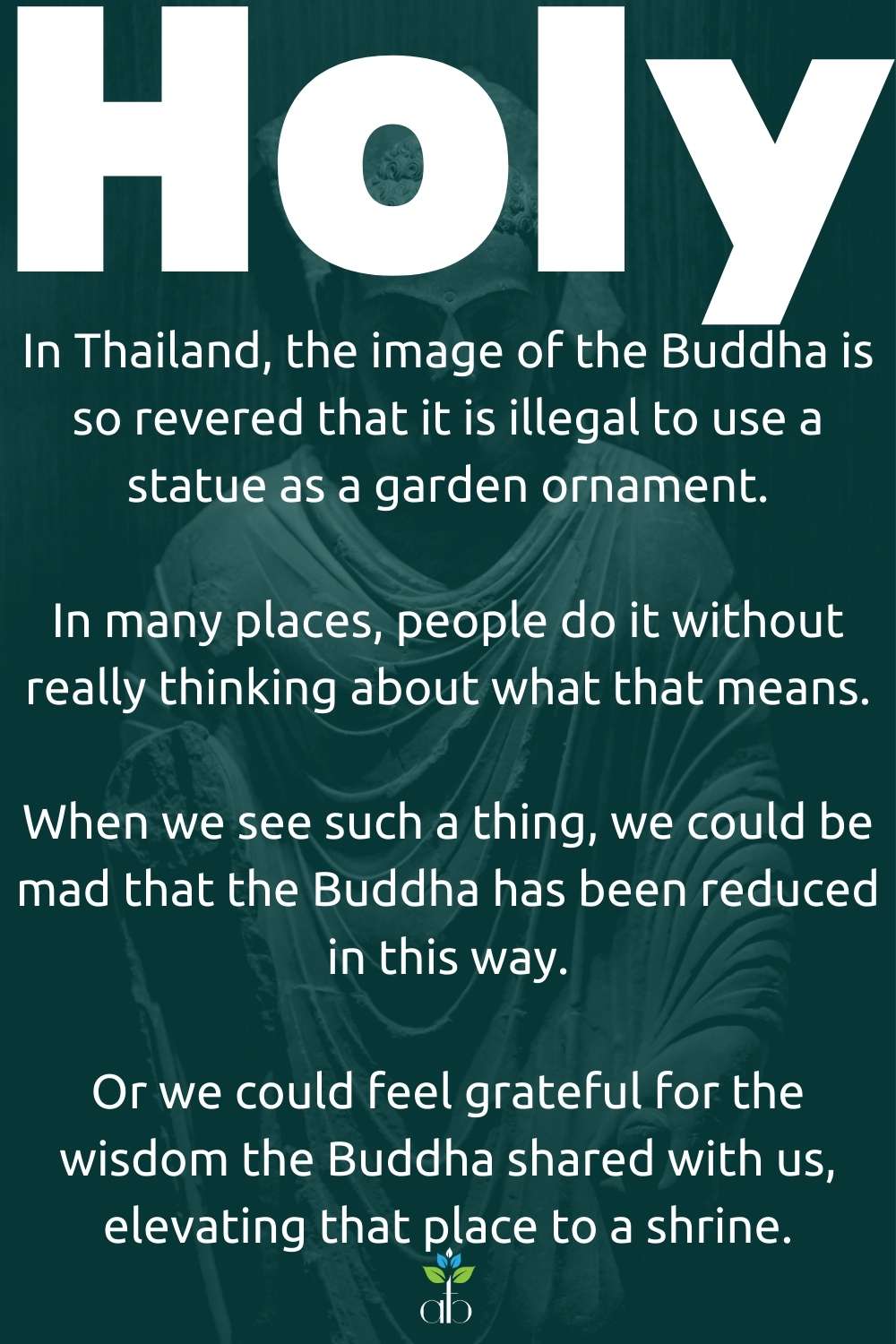Episode 461
Make It Holy

In many parts of the world, people are charmed by images of the Buddha. They liked to put them on a mantlepiece or in their garden as ornaments, perhaps without thinking about the deeper meaning of these statues.
In Thailand, the image of the Buddha is so revered that it is illegal to use it as a decoration. The only appropriate place for such an image is a shrine for contemplation.
When we see the Buddha in a garden or on a shelf, we could berate the householder, or be shocked that the Buddha has been reduced in such a way. Or we could notice Him, and elevate Him in our minds, feeling grateful for the wisdom of Our Teachers, creating a shrine in that very moment, in that very place.
Hosts & Guests
Kurt Robinson
Transcript
Welcome, beautiful thinkers!
I’d like to talk to you about this idea of “Making It Holy”.
So sometimes I notice, like last week, I noticed a couple of people had a Buddhist statue, or an image of the Buddha, in their homes.
And some people take these things, and they use them as garden ornaments, or they put them on a shelf, without perhaps thinking too deeply about the spiritual purpose of these items.
What they really represent, the depth of knowledge and wisdom, the holiness, the purity, the lordship of the Lord Buddha, the grand spiritual tradition, which has now become international.
And of course, there are many such objects, which people will take and use them simply because they look nice.
In Thailand, of course, it is illegal to use a Buddha hand or Buddha sculpture, in your garden as an ornament, because these things are icons, they’re so important to the tradition.
And of course, I remember bowing, many times in the temple of Tham Krabok before the Buddh.
Something which was unusual for me coming from a Christian background, I thought, well, there was a certain commandment about this, about making graven images and worshipping them.
But I put that preconception behind and said, “Well, these things are holy here. And by bowing before the Buddha, we are showing respect to this grand tradition, to this wisdom.”
“And to the processes, part of the practices childbirths develop about.”
“Our spirituality or realize when things are really about.”
Now, it does occur to me, when I see these things used as garden ornaments or decorations in household. I think that’s, maybe that’s not really right.
But then I think about something else, I think.
Some people will see this image of the Buddha, and they won’t think too closely about it.
But I know a little, I have a glimpse of what that means, of the clear depth of meaning.
Seeing through that murky pond, to what lies beneath.
Knowing a little bit of the power that that image represents.
I have that, I have that glimpse.
So when I seen these things, I don’t think about scorn or think about berating someone or telling them that these things are too holy to being used simply as decorations.
No, instead, I think about the gratitude that I have for these great teachers.
When these objects are placed in our homes, when we see them wherever they may be, they are a reminder to us that something is special.
I also think about this in the tradition of Siddha Yoga, following my guru, Baba Muktananda.
I like to put on my robes, or put on my meditation clothes, before I sit to meditation.
And sometimes, what happens is I put on the clothes, and I’ll get distracted by something like, I pick up my ukulele or start reading a book or something looking at my phone.
And I think, “Oh, well, you know, I probably shouldn’t be doing this in my meditation clothes, because these is suitable for a particular purpose.”
“And these are the things that I do to try to maintain the purity.”
And it’s, it’s true, there are probably certain things I should not be doing in those robes.
But then I also think, “Well, if I am going to be doing those things in my robes, then it is important to make those things holy, to do them with all of the care, attention, presence, the meditation that would likely be appropriate, or would likewise be appropriate for my seated meditation.
If I pick up my ukulele, while I’m wearing my meditation robes, how present can I be?
How can I make it truly worthy of the apparel that I’m wearing?
So this doesn’t just apply to when we’re wearing a meditation clothes, or when we see a statue of the Buddha.
It can apply to every aspect of life.
Treating them with care, with gentle touch, with presence, with attention.
How can we make it holy?

New Episodes Every Weekday
11am Mexico City time
10 min episodes Monday - Thursday
1 h interview episode on Fridays
As an Amazon Associate I earn from qualifying purchases.
Stay Beautiful &
Stay Connected
